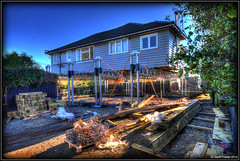
Search
Images for earthquakes; more images...
Brightening The City
Images, eqnz.chch.2010
None
Brightening The City
Images, eqnz.chch.2010
None
Brightening The City
Images, eqnz.chch.2010
None
Brightening The City
Images, eqnz.chch.2010
None
Brightening The City
Images, eqnz.chch.2010
None
Brightening The City
Images, eqnz.chch.2010
None
Brightening The City
Images, eqnz.chch.2010
None
Brightening The City
Images, eqnz.chch.2010
None
Brightening The City
Images, eqnz.chch.2010
None
Brightening The City
Images, eqnz.chch.2010
None
Brightening The City
Images, eqnz.chch.2010
None
Brightening The City
Images, eqnz.chch.2010
None
Brightening The City
Images, eqnz.chch.2010
None
Brightening The City
Images, eqnz.chch.2010
None
Brightening The City
Images, eqnz.chch.2010
None
Brightening The City
Images, eqnz.chch.2010
None
Brightening The City
Images, eqnz.chch.2010
None
Brightening The City
Images, eqnz.chch.2010
None
Brightening The City
Images, eqnz.chch.2010
None
Brightening The City
Images, eqnz.chch.2010
None
Brightening The City
Images, eqnz.chch.2010
None
Brightening The City
Images, eqnz.chch.2010
None
Brightening The City
Images, eqnz.chch.2010
None
Brightening The City
Images, eqnz.chch.2010
None
Krystal's Story
Articles, UC QuakeStudies
Summary of oral history interview with Krystal about her experiences of the Canterbury earthquakes.
Lessons from the 2011 Christchurch earthquake for improving the seismic pe…
Research papers, The University of Auckland Library
The 2011, 6.3 magnitude Christchurch earthquake in New Zealand caused considerable structural damage. It is believed that this event has now resulted in demolition of about 65-70% of the building stock in the Central Business District (CBD), significantly crippling economic activities in the city of Christchurch. A major concern raised from this event was adequacy of the current seismic design practice adopted for reinforced concrete walls due to their poor performance in modern buildings. The relatively short-duration earthquake motion implied that the observed wall damage occurred in a brittle manner despite adopting a ductile design philosophy. This paper presents the lessons learned from the observed wall damage in the context of current state of knowledge in the following areas: concentrating longitudinal reinforcement in wall end regions; determining wall thickness to prevent out-of-plane wall buckling; avoiding lap splices in plastic hinge zones; and quantifying minimum vertical reinforcement. http://www.2eceesistanbul.org/
Economic activity in Canterbury reaches a post-quake peak
Audio, Radio New Zealand
Economic activity in Canterbury reached its fastest pace in July since the 2010/2011 earthquakes.
Coroner report into CTV collapse critical of Fire Service
Audio, Radio New Zealand
Professor Maan Alkaisi, a spokesman for the Christchurch Earthquake Families Group speaks with Geoff Robinson.
Mandatory seismic retrofitting : A case study of the land use impacts on a…
Research Papers, Lincoln University
As a result of the Christchurch Earthquake that occurred on 22nd February 2011 and the resultant loss of life and widespread damage, a Royal Commission of Enquiry was convened in April 2011. The Royal Commission recommended a number of significant changes to the regulation of earthquake prone building in New Zealand. Earthquake prone buildings are buildings that are deemed to be of insufficient strength to perform adequately in a moderate earthquake. In response to the Royal Commission recommendations the New Zealand Government carried out a consultative process before announcing proposed changes to the building regulations in August 2013. One of the most significant changes is the imposition of mandatory strengthening requirements for earthquake prone buildings on a national basis. This will have a significant impact on the urban fabric of most New Zealand towns and cities. The type of traditional cost benefit study carried out to date fails to measure these impacts and this paper proposes an alternative methodology based on the analysis of land use data and rating valuations. This methodology was developed and applied to a small provincial town in the form of a case study. The results of this case study and the methodology used are discussed in this paper.
Organisational resilience after the Canterbury earthquakes : a contextual …
Research papers, University of Canterbury Library
Following a disaster, an organisation’s ability to recover is influenced by its internal capacities, but also by the people, organisations, and places to which it is connected. Current approaches to organisational resilience tend to focus predominantly on an organization's internal capacities and do not adequately consider the place-based contexts and networks in which it is embedded. This thesis explores how organisations’ connections may both hinder and enable organisational resilience. Organisations in the Canterbury region of New Zealand experienced significant and repeated disruptions as a result of two major earthquakes and thousands of aftershocks throughout 2010 and 2011. This thesis draws upon 32 case studies of organisations located in three severely damaged town centres in Canterbury to assess the influence that organisations’ place-based connections and relational networks had on their post-earthquake trajectories. The research has four objectives: 1) to examine the ways organisations connected to their local contexts both before and after the earthquakes, 2) to explore the characteristics of the formal and informal networks organisations used to aid their response and recovery, 3) to identify the ways organisations’ connections to their local contexts and support networks influenced their ability to recover following the earthquakes, and finally, 4) to develop approaches to assess resilience that consider these extra-organisational connections. The thesis contests the fiction that organisations recover and adapt independently from their contexts following disasters. Although organisations have a set of internal capacities that enable their post-disaster recovery, they are embedded within external structures that constrain and enable their adaptive options following a disaster. An approach which considers organisations’ contexts and networks as potential sources of organisational resilience has both conceptual and practical value. Refining our understanding of the influence of extra-organisational connections can improve our ability to explain variability in organisational outcomes following disasters and foster new ways to develop and manage organisational resilience.



